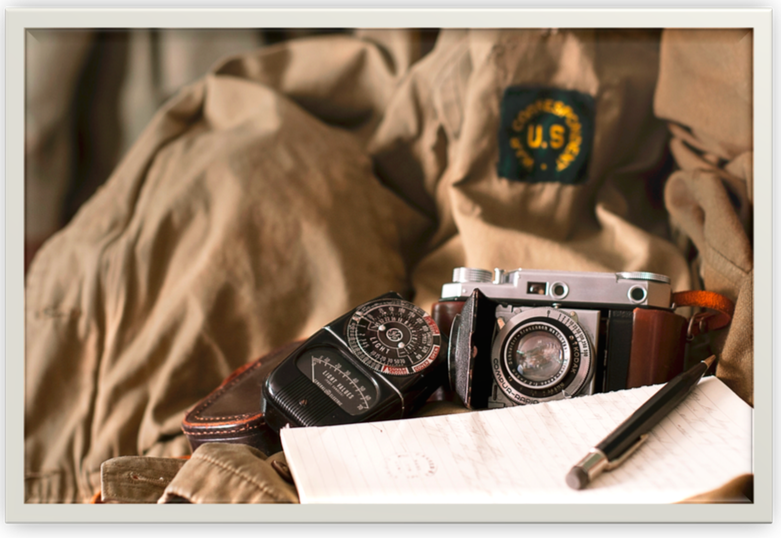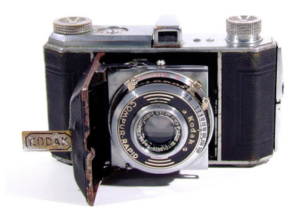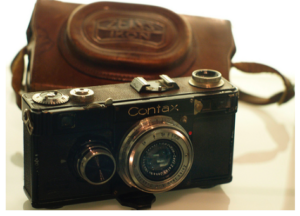
WW2 American Red Cross Recipes
A selection of WW2 American Red Cross Recipes for the World War Two Reenactor.
“Red Cross records indicate the organization purchased enough flour between 1939 and 1946 to make 1.6 billion doughnuts. Red Cross women were serving doughnuts at the rate of 400 per minute during the years 1944-1946.
Table of contents
Red Cross Doughnuts
1.5 cups of sifted flour
1/4 tsp. baking soda
1/4 tsp. salt
1/4 tsp. butter or substitute, melted
1/4 tsp. ginger
1/4 cup molasses
1/4 cup sour milk (buttermilk)
1 egg, well beaten
Combine half of the flour with soda, salt, and ginger. Combine egg, molasses, sour milk, and melted butter or substitute. Blend with flour mixture and stir until thoroughly mixed and smooth. Add remaining flour to make dough of sufficient body to be rolled. Roll on floured board, to the thickness of 1/4inch. Cut with doughnut cutter. Fry in deep hot fat (360 degrees) until lightly browned, about 2 to 3 minutes. Drain on brown paper.”
Christmas Packages
Shipping the WW2 American Red Cross Recipes such as in a package required following special guidelines.
“Anyone hoping to send a package overseas was advised to mail early–anytime from Sept 15 through Oct 15. The post office listed a series of guidelines for those mailing packages
‘…The weight limit is 5 pounds. Parcels may not be more than 15inches in length and 36inches in length and girth combined.’ ” Later on, a gift container was manufactured (sorry no picture) it measured 10 by 6 by 4 inches. (119)
“We searched for small compact items that packed well and could survive being shipped thousands of miles. We collected stationery, pencils, airmail stamps, paperback books, Western and detective magazines, canned foods, candy bars, chewing gum, fruit-flavored powdered drinks, dried packaged fruit such as raisins, dates, and prunes, hometown newspapers, Readers Digests, playing cards, heavy socks, and of course snapshots of home folks were especially welcome” (120)
“Packing Cookies took special care. Even though cookies were wrapped and rewrapped in layers of shredded waxed paper or tissue, and then tucked inside tin boxes, they still often arrived in bits and pieces. Not many complained, though. Instead, they shared the contents of their Christmas boxes with buddies not so fortunate” (121)
Soft Oatmeal Cookies (p.121)
1 cup raisins and 1/2 cup water. Cook until hot.
Simmer 10-105 minutes. In a bowl add the following and cream well:
1 cup brown sugar
1 cup shorting (margarine is ok)
1/2 tsp. salt
Add: 2 eggs, beaten well
Mix in: 2 cups flour
Add 1/2 cup nuts, chopped
1/2 cup coconut
2 cups oatmeal
1 tsp vanilla
Drain the raisins, save the liquid and measure 5 T. raisin liquid. If there is not enough juice, add water to make 5 T. Dissolve 1 tsp. baking soda in the juice. Add the cookie batter and stir in the raisins last. Drop by tsp. on greased cookie sheet. Bake at 350 degrees, 12 to 15 minutes.
Wartime Cookies
1 beaten egg
2 cups molasses
3/4 cup melted shorting
1 cup warm milk
2 T. baking soda; dissolve in 2 T. warm water
5 cups flour
2 tsp. cinnamon
1.5 tsp cloves
1/2 tsp. salt
2 tsp. ginger
Add ingredients in the above order, mixing thoroughly after each addition. Be sure to stir in the flour (sifted with other dry ingredients) a little at a time. Drop on a greased baking sheet with a teaspoon and bake at 375 degrees until lightly browned.
Brownies
1/2 cup shortening
1 cup sugar
2 eggs
3 T. cocoa
1/2 cup flour
1 tsp. vanilla
1/2 cup chopped nuts
Mix well, put in a greased 9×9 cake pan. Bake at 350 Degrees for 20 to 25 minutes. Frost when cool.
Serviceman Special Candy
2 cups sugar
1 tsp. vanilla
1 cup cream
1lb marshmallows
1 T. butter
1 cup nuts
1.5 squares bittersweet chocolate
3 cups graham cracker crumbs
Combine sugar, cream, butter, chocolate, and vanilla. Cook to softball stage. Remove from fire and stir in remaining ingredients. Spoon into buttered pan. Press firm and cut into squares.
Victory Muffins (p.85)
2 T. shortening
1 egg
3/4 cup milk
1 cup All-Bran
1 cup sifted flour
2 1/2 TSB. baking powder
1/2 TSB. salt
DIRECTIONS: Beat shortening and egg together until well blended. Add All-Bran and milk and let stand for at least 20 minutes. (This may be done in the evening, adding dry ingredients in the morning.) Sift flour, baking powder, and salt together. Add to the first mixture, stirring only until liquid and dry ingredients are combined. Fill greased muffin pans 2/3 full. Bake in preheated 400-degree oven. For small muffins, bake 25minutes; for large muffins, bake 30 minutes. Makes 12 small or 8 large muffins.
Raisin Honey Sandwiches (p.162)
1 cup raisins, chopped
1/8 TSB. salt
1 T. mayonnaise or salad dressing
1/4 cup nuts, chopped
1 1/3 T. lemon juice
3 T honey
DIRECTIONS: Combine ingredients. Mix thoroughly. Use as filling between thin buttered slices of either brown or white bread.
Military Punch
2 cups boiling water
1 to 3 cups lemon juice
1 cup sugar
1 T. rum extract
2 cups cold strong tea
1 large bottle of ginger ale
1 cup orange juice
Ice
Boil water and sugar for 5 minutes. After it has cooled, add orange juice, lemon juice, extract, and tea. Add ginger ale and ice and serve.
Halloween Cider Punch
2 cups pineapple juice
1 cup lemon juice
1 cup orange juice
Lemon rind
Ice
2 Quarts cider
2 cups strong tea
2 quarts ginger ale
Orange rind
Mix fruit juices and orange and lemon rind, cut into pieces. Add cider and tea and put in a large punch bowl. Just before serving, add ginger ale and ice. Serves 65-70. A sugar syrup may be added.
V Loaf (p.63)
2 cups cooked rice
1/2 cup fine dry bread crumbs
1/2 cup chopped nut meats
1 cup cooked tomatoes
1 egg
1/2 tsp. salt
1/8 tsp. black pepper
2 T. green pepper chopped
4 t. melted butter or margarine
1 small onion, chopped
DIRECTIONS: Mix all together to form a loaf. Bake in a greased loaf pan in a 350-degree oven for 30 minutes. Cover with mashed potatoes put back in the oven to brown. Serve with tomato sauce. This recipe defies detection as a substitute meatloaf and is very good.
Mr. John Burger (p. 24)
1 pound hamburger
1/2 tsp horseradish mustard
1 egg
Small onion, chopped
Salt and pepper to taste
DIRECTIONS: Mix well and spread on bread slices. Makes about 9 slices. Broil until brown–about 9 minutes.
Red Cross POW Packages
” In the beginning of the war commercial firms put together these packages. Later on, the Red Cross volunteers took over [. . .] [t]hey assembled monthly packages for French, Polish and other allied prisoners [. . .] [a]long with the food packages, clothing, shoes comfort articles and medical supplies were also sent” (79 Edson).
The packages measured “10 inches square and 4.5 inches deep and weighed exactly 11 pounds, as prescribed by the German postal regulations. Red Cross nutrition experts had put together a list of items determined as most effectively supplementing prison camp diet. The boxes contained a variety of items that may have included:
A five-ounce box of raisins; a half-pound of American cheese; one pound can of powdered milk; 12 ounces of corned beef from Argentina; a 6 ounce can of ‘Brunch’ (Pork Luncheon Meat) which consisted of chopped pork, salt, water, sugar, and sodium nitrate; a 2 ounce can of coffee; a 7 ounce can of tuna fish; a half-pound box of sugar cubes; a 6 ounce box of army K2 biscuits; four bars of guest size toilet soap; one pound can of oleomargarine; four Hershey chocolate bars; and a can of pate (Liver Paste) which was a mixture of milk, chopped pork livers, pork fat, onions, oats, soy, grits, whole wheat, yeast, defatted wheat germ, and hydrolyzed plant protein.
Red Cross Parcels Wikipedia Link
The Red Cross also sent seeds and tools, along with cookbooks to the prison of war camps, where prisoners were sometimes allowed to cultivate vegetable gardens.
Many times a word from home did more good than anything. The ‘Red Cross News.’ a publication containing favorite comics, news items, sports news, and special articles was distributed to the prisoners of war on a regular basis” (79).
WW2 American Red Cross Recipes Source
Edson, Laurie J., “American Red Cross 50th Anniversary World War Two Cookbook.” Cedar Falls, IA, Woolverton Publishing Company. 1993. Amazon link here

















